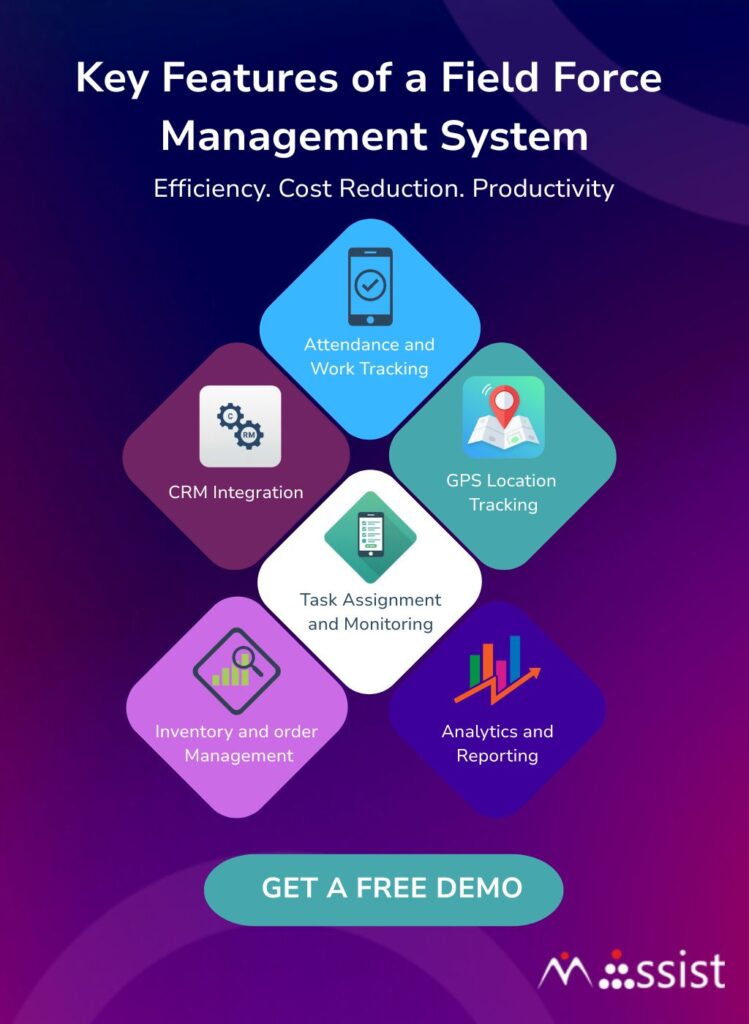Field Force Management (FFM) has become an essential tool for businesses with distributed workforces, particularly those in sales, service, and delivery. With employees constantly on the move, it’s crucial to have a system that tracks their activities and enhances productivity. But what exactly is Field Force Management, and how can it benefit businesses?
This blog will explore what Field Force Management is, its key components, and the advantages it brings to organizations. Let’s break down this subject in simple, understandable terms.
What is Field Force Management?
At its core, Field Force Management (FFM) refers to a set of processes and tools that allow businesses to manage and monitor their employees in the field. Whether it’s a sales representative visiting clients, a delivery driver dropping off goods, or a technician providing on-site services, FFM helps businesses track, monitor, and optimize these activities.
By using digital tools and software, businesses can automate many tasks associated with field management, such as attendance tracking, task assignment, location monitoring, and report generation. These solutions often use GPS technology, mobile apps, and cloud-based systems to ensure that both management and employees have real-time access to information.
In short, FFM is about making sure that the field workforce operates smoothly and efficiently while providing managers with insights to make informed decisions.
Key Features of a Field Force Management System
An effective Field Force Management system typically includes several important features. Each one contributes to improving efficiency, reducing costs, and increasing overall productivity.
- GPS Location Tracking: One of the most useful aspects of FFM is the ability to track the location of employees in real-time. This allows businesses to ensure that employees are following their assigned routes and visiting clients as scheduled. It also enables better route optimization, reducing fuel costs and travel time.
- Attendance and Work Tracking: Field employees no longer need to rely on manual check-ins. With FFM, they can mark their attendance digitally, often using a mobile app. Managers can track working hours, breaks, and task completion, making it easier to assess performance and productivity.
- Task Assignment and Monitoring: Managers can assign tasks to employees in real-time and track the progress of these tasks. This feature ensures that employees are held accountable and that there is transparency in work assignments. Moreover, it allows managers to redistribute tasks if needed, based on employee location and availability.
- Customer Relationship Management (CRM) Integration: Many FFM systems integrate with CRM platforms, allowing businesses to keep track of customer interactions, service requests, and sales opportunities. This ensures that field employees have access to up-to-date customer information, making them more effective during client interactions.
- Inventory and Order Management: For sales and delivery teams, managing inventory is a critical function. FFM systems can integrate with inventory management tools, enabling employees to check stock availability, place orders, and update inventory levels in real time.
- Analytics and Reporting: Finally, an FFM system provides detailed analytics and reports on employee performance, task completion rates, sales conversions, and more. This data is invaluable for making strategic decisions, identifying areas for improvement, and rewarding top performers.
Benefits of Implementing Field Force Management
The advantages of adopting a Field Force Management system are numerous and can have a profound impact on a business’s bottom line. Here are the key benefits:
- Increased Productivity: By automating manual processes and providing real-time information to both managers and field employees, FFM significantly boosts productivity. Employees can complete tasks more efficiently, and managers can make better decisions based on live data. Additionally, field workers can spend less time on administrative tasks and more time on revenue-generating activities.
- Improved Accountability: With features like location tracking and digital attendance, Field Force Management systems help ensure that employees are where they need to be and are completing tasks on time. This transparency reduces the chances of time theft or inefficiency and holds workers accountable for their actions.
- Enhanced Customer Service: Integrating FFM with CRM platforms ensures that field employees have access to the most up-to-date customer information. Whether it’s knowing a customer’s purchase history or understanding their specific service needs, this data allows employees to deliver better, more personalized service.
- Cost Savings: By optimizing routes, reducing fuel consumption, and eliminating unnecessary travel, FFM systems can save businesses a substantial amount of money. Moreover, automated processes reduce the need for manual intervention, saving time and lowering labor costs.
- Better Decision Making: With the analytics and reporting capabilities of FFM systems, managers can make more informed decisions. They can identify trends, spot performance issues, and find opportunities for improvement. This data-driven approach leads to smarter business decisions and a more agile organization.
Challenges in Field Force Management
While Field Force Management brings many benefits, it also comes with challenges that businesses need to address. Implementing FFM requires careful planning, training, and a willingness to adapt to new technologies.
- Resistance to Change: Workers accustomed to conventional methods of working might resist embracing a digital field force system. This situation could be mitigated with clear communication. Training and highlighting the system’s utility can address this resistance.
- Data Security Concerns: The constant flow of real-time data may cause apprehensions. These concerns may pertain to privacy and security of data. Businesses have a duty to confirm that their FFM systems incorporate robust security. This is necessary to protect sensitive data.
- Initial Costs: The long-term benefits of FFM are significant. However, the initial cost of implementation can be high. Despite that businesses must view this as an investment. This investment will offer a substantial return in increased efficiency. It will also enhance productivity.
MAssist: The Best Choice for Field Force Management
MAssist is a leading provider of Field Force Management solutions, designed to meet the needs of modern businesses. With a comprehensive suite of features, MAssist makes it easy to track, manage, and optimize your field workforce.
- GPS Tracking in Real-Time: Understand your employees’ locations continuously. This ensures adherence to schedules. At the same time, it optimizes their routes.
- Task Assignment and Monitoring: Task assignments to employees become easy. This is combined with the ability to track their real-time progress. Such a practice ensures accountability and transparency in the workplace.
- CRM Integration: Seamless integration. MAssist with your current CRM system. This provides field employees with access to vital customer data.
- Detailed Analytics and Reporting: Obtain key insights. These insights are regarding your workforce’s performance. With these insights making data-driven decisions becomes possible. The goal? Improve productivity.
The Bottom Line
Field Force Management is no longer a luxury. It’s a must for businesses with mobile workforces. With the right system, you can increase productivity. Also, you can improve accountability and enhance customer service. On top of that, you can save on costs. MAssist offers a Field Force Management solution. The solution is comprehensive. It provides a myriad of benefits.
If you seek to optimize field operations, reach out to MAssist. This company can take your business to a whole new level. Get in touch today. See how our tools can help. They can transform workforce management.

